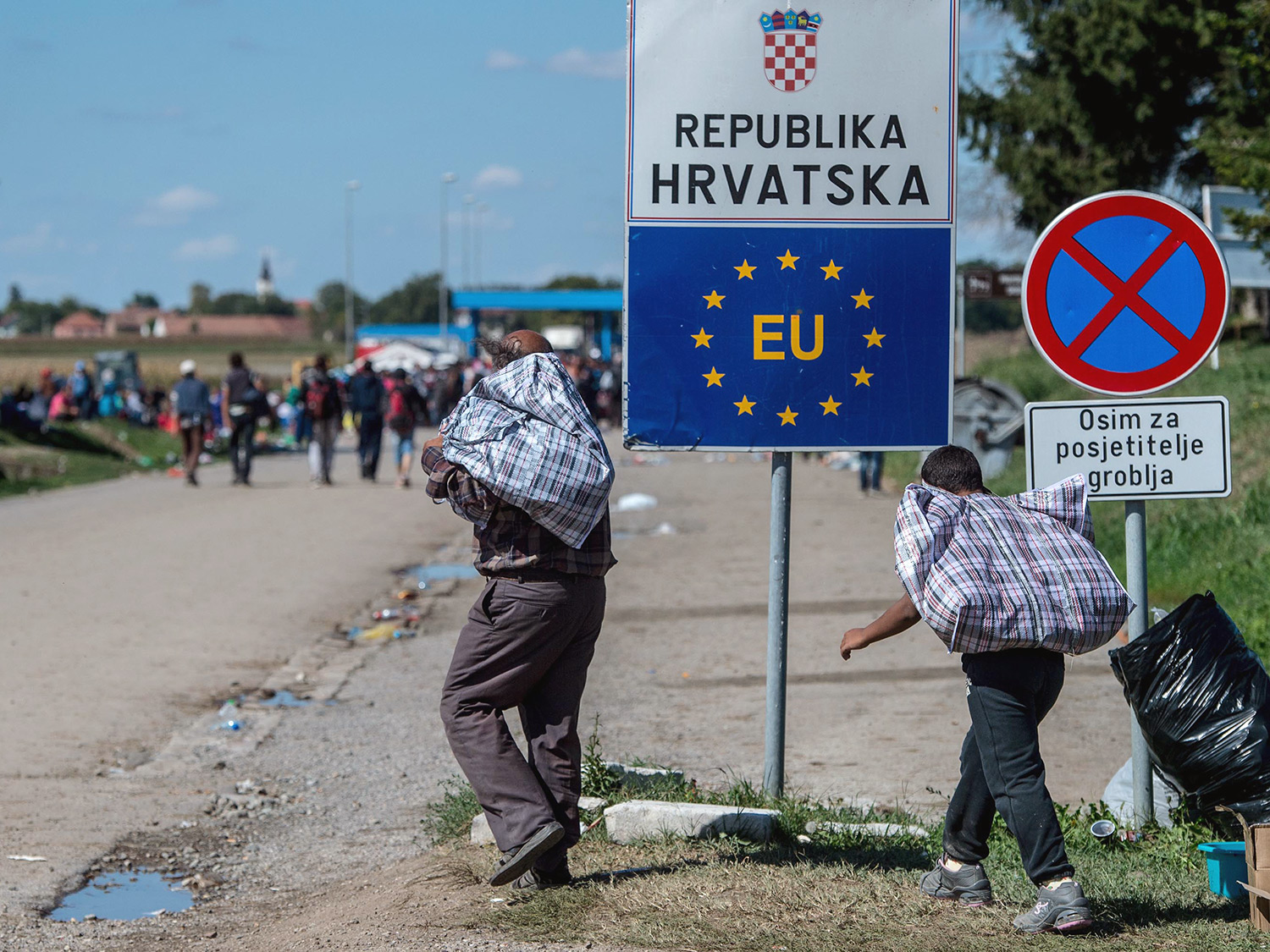

A handful of countries, including Germany and five further European states, have begun to impose controls on some sections of their national borders. Except for France, which cites security concerns about terrorism, all the others cite the refugee crisis for the return of border controls.
Martina Herzog -
ِِِِِAll it amounts to is a simple sign on the edge of the road, if even that. People drive past, usually not even noticing it, and at the same time not even realising that they have crossed an international border, be it into France, Poland, Luxembourg or one of the other 26 European nations belonging to the Schengen Agreement on visa-free travel inside the EU.
“Enjoy and cherish this right,” is the advice of European Union Home Affairs Commissioner Dimitris Avramopoulos to EU nationals. “Jump on a train or hop in the car and visit your neighbours. All this is possible without giving borders a second thought.”
But now, a handful of countries, including Germany and five further European states, have begun to impose controls on at least some sections of their national borders. Except for France, which cites security concerns about terrorism, all the others cite the refugee crisis for the return of border controls.
Which raises the question: Isn’t the refugee crisis in northern Europe now more or less over?
The EU is quick to answer. It warns that, if the controls are dropped, then migrants could once again start flowing in to the rest of Europe from Greece.
“This is a symbolic policy,” says Monika Eigmueller of the Europa University in the German city of Flensburg, close to the border with Denmark.
“What we now have are not comprehensive controls, but it means the state is sending a message: We have not completely given up our sovereignty.”
She says the political sector is responding to the growing insecurity of voters and to the rising strength of right-wing parties exploiting peoples’ fears of terrorism and immigration.
The question of whether controls are really being applied is an entirely different matter.
Eigmueller, who lives close to the German-Danish border, where there are supposed to be controls, says she has nothing to report.
“Here, you cross over a small bridge and then you’re in Denmark. Sometimes, every couple days or so, a border policeman — there’s your symbolic policy — will stand guard for maybe an hour, watching the ducks.”
Still, borders are slowly but surely becoming tighter, even inside the Schengen zone. Even if the surveillance is not visible, data are being collected.
Belgium has started to store information for passengers making international connections — not only on air travel, but also rail, bus and ship transportation. Belgium hopes this will aid in the anti-terrorism fight.
Travellers from non-EU Balkan states —who currently can travel to Europe without needing an entry visa — may in the future need one, if the EU Commission has any say.
“Terrorists and criminals don’t care much for national borders. The only way to defeat them is by working together effectively,” said EU Security Commissioner Julian King recently in announcing a plan called the European Travel Information and Authorisation System.
It would require travellers to fill in an online application providing basic data such as information on their identity, travel documents, residence and contact details.
But even EU citizens must start getting used to the prospect that they, too, will be subject to checks when they enter or leave the EU.
Oxford University political scientist David Miller is one who argues for border controls as being, if nothing else, a visible sign of a state showing its sovereignty.
“Capital flows are invisible. The economy may be crippled by capital flight or unwanted investment: You can’t really see it,” he says. “But loss of control over borders is visible. You can see people on television coming in and either forcing their way across borders or jumping onto lorries or coming on boats. It’s a very visible sign of the limited capacity of states to control their borders.” — dpa
Oman Observer is now on the WhatsApp channel. Click here



